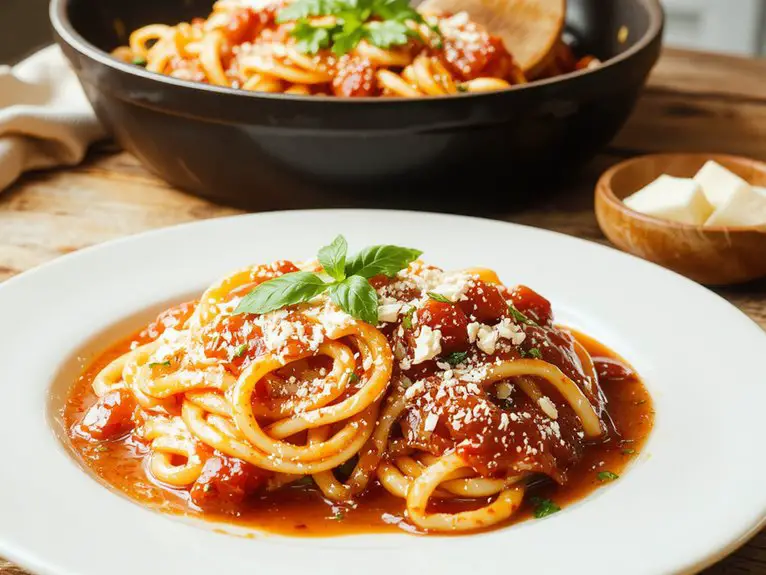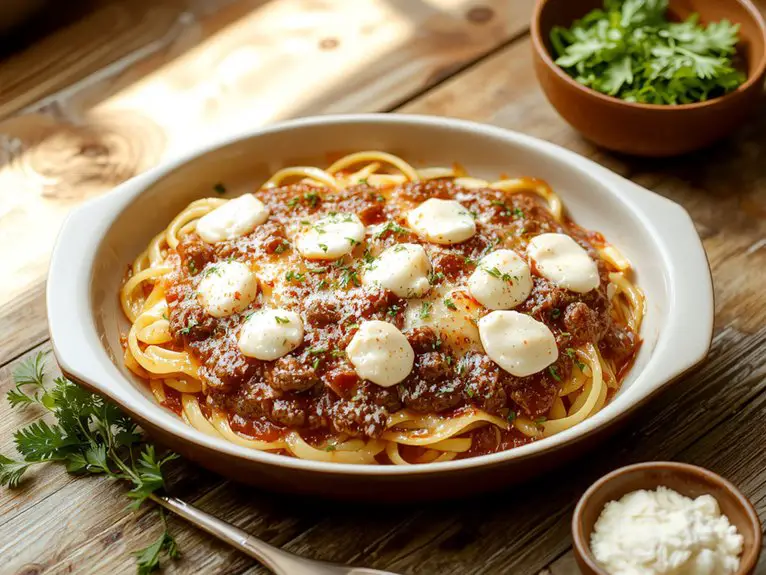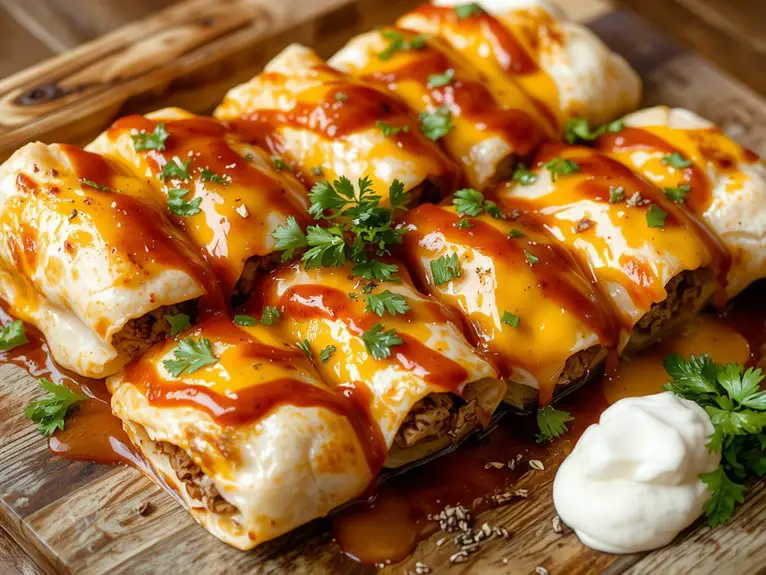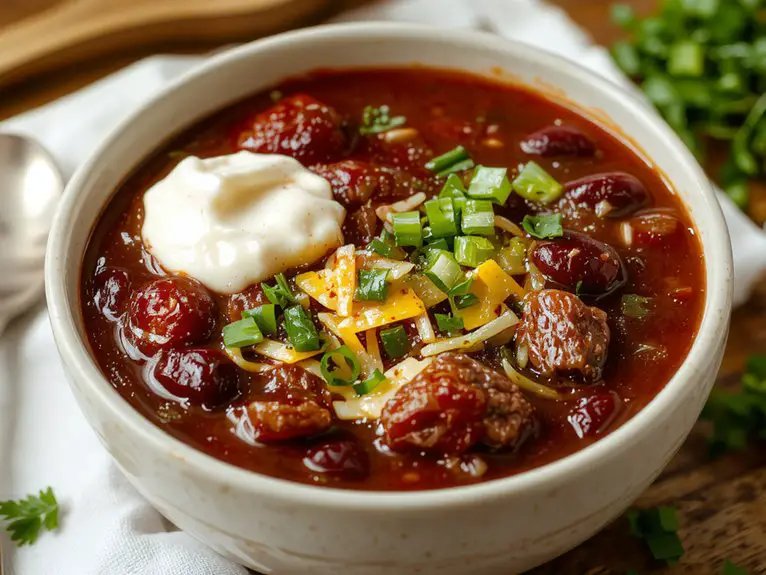Recipe
You haven’t truly lived until you’ve made homemade fried rice in your own kitchen—trust me, it’s a game-changer. This recipe is my go-to for a quick, customizable meal that’s packed with flavor and so satisfying.
The secret? A hot skillet, day-old rice, and a splash of soy sauce that ties everything together. I’ve tweaked this recipe over the years, and now it’s the one I always come back to when I need something that’s both comforting and exciting.
Picture fluffy rice, crisp-tender veggies, and juicy bites of protein, all coated in that irresistible umami-rich glaze. Even if you’re new to cooking, this dish is foolproof and sure to impress. Once you try it, you’ll wonder why you ever ordered takeout.
Ingredients
Fried rice is all about simplicity and flexibility, but a few key ingredients make all the difference. Here’s what you’ll need, along with some insider tips to elevate your dish:
- Cooked Rice (preferably day-old): Using cold, leftover rice prevents it from getting mushy during cooking. Freshly cooked rice can work if you spread it on a tray to cool and dry out first.
- Eggs: They add richness and act as a binding agent. Scramble them first for a fluffy texture.
- Vegetables (peas, carrots, onions, bell peppers): The go-to trio for flavor and color. Frozen veggies are a great shortcut—just thaw them before cooking.
- Protein (chicken, shrimp, pork, tofu): Customize based on what you have. Pre-cooked or rotisserie chicken saves time.
- Soy Sauce: The backbone of flavor. Use low-sodium if you’re watching salt levels. For depth, add a splash of oyster sauce or fish sauce.
- Garlic & Ginger: Fresh is best here. They bring aromatic warmth that powder can’t match.
- Sesame Oil: A drizzle at the end adds nutty richness. Don’t cook with it, as high heat destroys its flavor.
- Green Onions: For garnish and freshness. Chop them finely for a finishing touch.
*Pro Tip*: Always cook ingredients separately before combining. This guarantees everything cooks evenly and stays flavorful.
*Substitutions*: No soy sauce? Try tamari or coconut aminos. Out of sesame oil? A dab of butter at the end works wonders.
*Must-Have*: Day-old rice and soy sauce are non-negotiable for authentic texture and flavor.
*Little Wins*: A sprinkle of toasted sesame seeds or a dash of chili flakes can take your fried rice from good to gourmet.
How to Make the Best Classic Fried Rice Recipe

– Cook the rice a day ahead: Use day-old cooked rice for the best texture. Freshly cooked rice tends to be mushy when fried.
If you need it immediately, spread freshly cooked rice on a tray and let it cool completely to reduce moisture.
– Prep all ingredients beforehand: Chop vegetables, beat the eggs, and measure sauces before heating the pan.
Fried rice cooks quickly, so having everything ready guarantees nothing burns or overcooks.
– Heat the wok or skillet: Get it screaming hot before adding oil.
A hot pan prevents ingredients from sticking and gives that signature smoky flavor.
Use high heat throughout the cooking process, but keep your motions quick to avoid burning.
– Scramble the eggs first: Push them to the side after cooking so they don’t overcook.
This keeps them fluffy and prevents them from breaking into tiny bits.
– Sauté aromatics and vegetables: Add minced garlic, onions, or ginger for flavor, followed by chopped vegetables like carrots, peas, or bell peppers.
Stir-fry until just tender but still crisp—overcooking makes them soggy.
– Add the rice and break clumps: Gently break apart any clumps with a spatula.
Avoid pressing or overmixing, as this can turn the rice mushy.
– Season with soy sauce and other sauces: Drizzle soy sauce, oyster sauce, or fish sauce evenly over the rice.
Toss gently to coat without crushing the grains.
Pro tip: Start with less sauce—you can always add more to taste.
– Incorporate scrambled eggs and protein: Add cooked shrimp, chicken, or tofu along with the scrambled eggs.
Mix just enough to combine, making sure everything is heated through.
– Finish with green onions and sesame oil: Sprinkle chopped green onions and a drizzle of sesame oil for a fresh, aromatic touch.
These final additions elevate the flavor without extra cooking.
– Serve immediately: Fried rice is best enjoyed right off the heat.
The grains stay separate and the flavors are at their peak.
Plus, lukewarm fried rice just doesn’t hit the same.
Nutrition
This homemade fried rice recipe is a flavorful and satisfying dish. Below is the nutritional information per serving.
| Nutrient | Amount per Serving |
|---|---|
| Calories | 250 |
| Total Fat | 8g |
| Saturated Fat | 1.5g |
| Cholesterol | 35mg |
| Sodium | 400mg |
| Total Carbs | 35g |
| Dietary Fiber | 2g |
| Sugars | 3g |
| Protein | 10g |
Chef Tips
When preparing homemade fried rice, I always recommend using day-old rice because it’s less sticky and fries up better.
Heat your wok or pan until it’s smoking hot—this prevents soggy rice.
Cook ingredients in batches to avoid overcrowding.
Use high smoke-point oil like peanut or avocado.
Season with soy sauce at the end to keep flavors bright.
Don’t skip the sesame oil drizzle for aroma.
Frequently Asked Questions
Can I Use Brown Rice Instead of White Rice?
Yes, I can use brown rice instead of white rice. It’ll give a nuttier flavor and chewier texture. Just cook it a bit longer and make sure it’s cooled before frying to avoid mushiness. It works fine for me.
How Do I Store Leftover Fried Rice?
I’ll store leftover fried rice in an airtight container and refrigerate it within two hours. It’ll stay fresh for 3-4 days. When reheating, I make sure it’s piping hot to avoid any food safety risks.
Is Fried Rice Gluten-Free?
Fried rice isn’t always gluten-free—it depends on the ingredients. I’d check the soy sauce first since it often contains gluten. If I use tamari or gluten-free soy sauce, though, I’d make it safe.
Can I Make Fried Rice in an Air Fryer?
I wouldn’t recommend making fried rice in an air fryer—it’s designed for crispiness, not stirring. I’d stick to a wok or skillet to get that perfect texture and mix everything evenly. It just works better.
What’s the Best Substitute for Soy Sauce?
I’d say coconut aminos’s the best soy sauce substitute—it’s got that umami flavor without being too salty. Tamari’s another good choice if you’re avoiding gluten. Liquid aminos or fish sauce work in a pinch, too.










